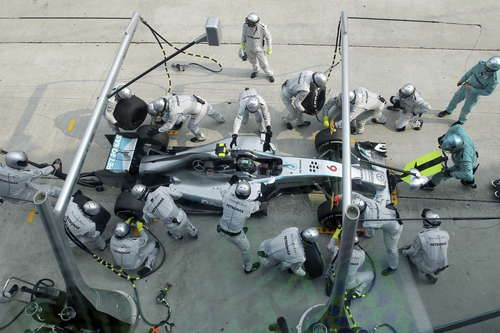Micro-foundations of industrial cluster genesis - the case of Motorsport Valley
Micro-foundations are key to understanding the early moments of cluster formation, before the first emergence of commercial activity.
The genesis of industrial clusters is an oft-debated topic in organisation studies, strategy, economics, and policy.
Prior research on cluster genesis has mostly focused on macro-level factors at cluster-level, such as agglomeration economies, untraded interdependencies, or institutions. Some studies have highlighted meso-level factors observed at the firm-level, such as serial entrepreneurship, anchor firms, innovations, networks, knowledge concentration, and local spin-offs.
Less attention has been devoted to the individual- and group-level processes underlying cluster genesis. These are the micro-foundations of cluster genesis. In other words, what people do “on the ground”, and how their micro-level activities shape the localisation of economic production.
Considering these micro-foundations is important to understand cluster genesis and how industrial clusters can emerge bottom-up, from the distributed activities of initially uncoordinated people, rather than top-down, through the interventions of established institutions such as government, universities, or trade associations.
Furthermore, micro-foundations are important to understand the early moments of cluster genesis. It is in these early moments that commercial production activities emerge, and initial localisation decisions are made; and it is ultimately through those decisions that commercial activities eventually cluster, or stick to, a location.
Yet, despite their importance, the micro-foundations of industrial clusters remain under-studied.
Therefore, the authors of the study The Primordial Soup: Exploring the Emotional Micro-Foundations of Cluster Genesis have asked: what are the micro-level mechanisms of cluster genesis before the emergence of commercial production activities?
To address this question, they conducted a qualitative, historical case study to explore the genesis of the British Motorsport Valley (BMV) industrial cluster in the United Kingdom from 1911 to the early 70s. This cluster, occupying a region to the north, west, and south of London, and centred around Oxfordshire, has over time comprised of thousands of motorsport companies and specialised suppliers, media, trade associations, educational and research institutions.
The genesis of this industrial cluster is traced to the efforts of the founders and members of amateur car clubs, which fed the passion of entrepreneurs. The study focuses on the pioneering role of these clubs and their initial activities, which eventually spurred one of the most important industrial clusters in the UK.
The study’s findings show that localising passion i.e., a spatially situated, shared emotional energy by which people become attached to the spaces where they carry out activities they enjoy, is a key mechanism of industrial cluster genesis.
It argues that localising passion turns spaces into places that are imbued with special meaning and value in the eyes of a social group. Thus, localising passion forges the emotional attachment that binds people to a geographical area, acting as a “sticky catalyst” that attracts in a location three basic “ingredients” useful for cluster formation (actors, activities, artefacts) and accelerates their interactions so that they can reproduce and evolve.
The authors also theorise that the shift of a configuration of actors, activities, and artefacts towards a new purpose, originates a new domain. This domain repurposing induces the transformation of activities from leisure to business.
The main theoretical contribution is to identify localising passion as a key mechanism of cluster genesis, thus highlighting people’s collective emotions as an important, yet so far understudied, micro-foundation of clusters.
The Primordial Soup: Exploring the Emotional Micro-Foundations of Cluster Genesis is published in Organization Science. The accepted version of the paper is available for download at City Research Online.




